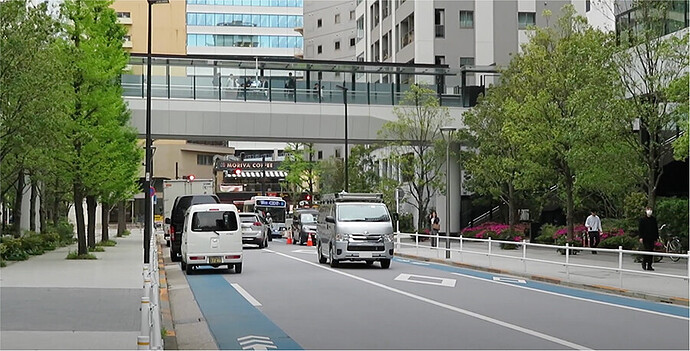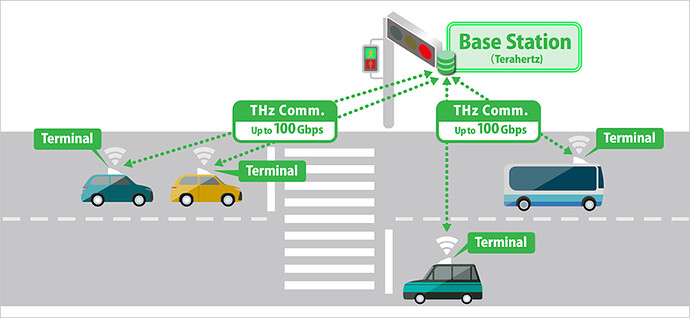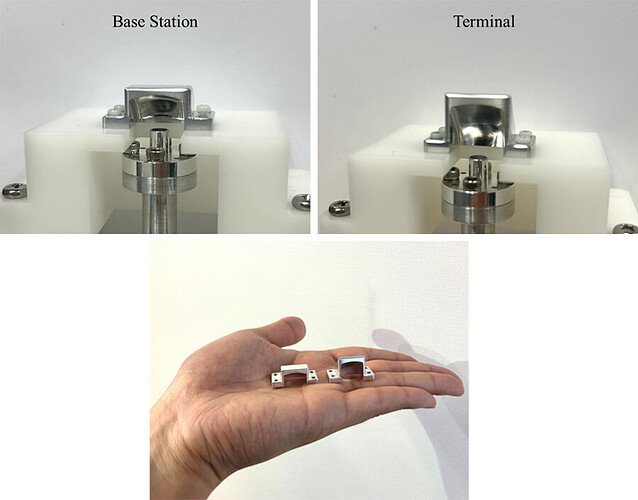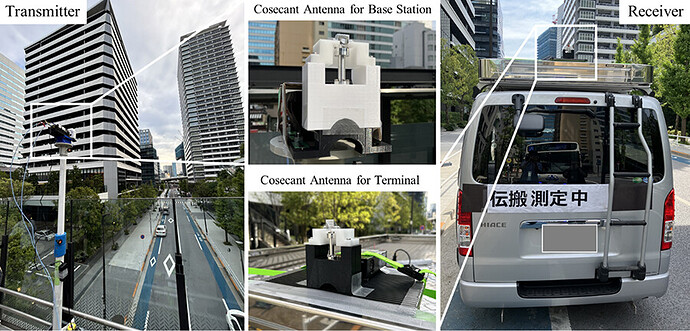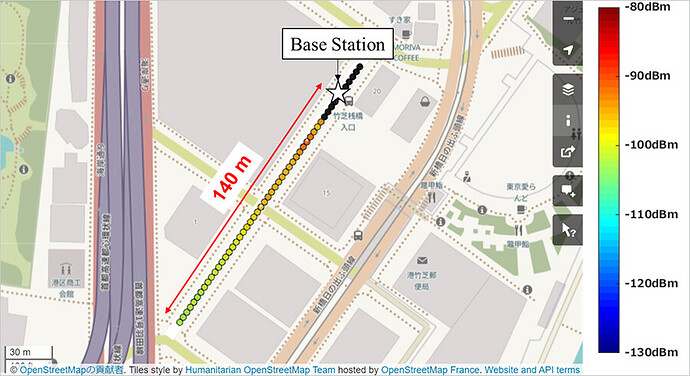SoftBank Corp. Successfully Demonstrates Beyond 5G/6G Terahertz Communication Coverage with Proprietary Antenna Technologies
Outdoor coverage for connected cars realized at 300GHz band
SoftBank Corp. (“SoftBank”) announced it successfully demonstrated Beyond 5G/6G terahertz outdoor coverage for connected cars with its proprietary antenna technologies. Until now, terahertz communication was widely assumed to be utilized for FWA (Fixed Wireless Access) or NFC (Near Field Communication) due to its characteristics, but in this field trial, SoftBank newly confirmed the reliability of terahertz communication as a use case for connected cars.
Field trial for terahertz communication coverage verification
Reason for utilizing terahertz communication
In recent years, research and development on Beyond 5G/6G technologies, which aim to achieve throughput of over 100Gbps, has been conducted worldwide as the demand for faster and higher capacity wireless communication grows. In this context, terahertz (THz) wireless technology is anticipated as a solution for achieving ultra-high-speed wireless systems, as it offers a wider frequency band compared to millimeter wave bands used in 5G.
Due to the significant propagation loss of THz waves, research has been carried out to utilize the narrow beam of high-gain antennas and extend communication distance to make THz wireless communication practical. By expanding the achievable communication distance, THz wireless technology holds potential for applications such as high-speed communication in areas where laying optical fiber is challenging or not feasible, serving as an alternative to optical fiber.
SoftBank is actively conducting research and development to utilize terahertz (THz) wireless technology for mobile communication. It successfully verified communication coverage in outdoor environments and confirmed the feasibility of THz communication, even beyond line of sight*1. However, the development of a system that can continuously track beams is necessary for the practical use of communication with terminals. This presents challenges in terms of complexity of the equipment and the precision required to track the terminals. Moreover, expanding the communication area, as with traditional mobile systems’ base stations, results in power dispersion, leading to a significant reduction in the THz wireless communication area.
Accordingly, SoftBank conducted a verification experiment to establish THz coverage specifically for vehicles by limiting the communication area only to roadways. This approach prevents power dispersion and enables the expansion of the communication area for vehicles driving outdoors.
[Note]
- *1
Refer to this press release (in Japanese)
Image of Terahertz communication use case for vehicles
Technology
With typical base stations, high-gain sector antennas are installed to construct a wide communication area. These antennas transmit radio waves with a wider pattern in the horizontal plane and a narrower beam in the vertical plane. However, a phenomenon can occur where the receiving signal becomes weaker at a closer point to the macro base station compared to slightly further distances. Therefore, for vehicle-oriented terahertz wireless communication, a communication area was constructed with narrower coverage in the horizontal plane and wider coverage in the vertical plane, ensuring stability along the traffic direction of the road.
In constructing the communication area for vehicles, SoftBank applied the characteristics of a cosecant squared beam pattern (referred to as “cosecant squared characteristics”). This is a technique used for aviation radar, where the receiving power level at both the base station and the terminal remains constant regardless of the horizontal distance between antennas with a height difference. To achieve cosecant squared characteristics in communication, a special antenna configuration is required. SoftBank developed a proprietary cosecant pattern antenna (referred to as “cosecant antenna”) that realizes the cosecant squared characteristics by using it at both the base station and the terminal. This allows for maintaining high antenna gain while ensuring a system with constant power reception. It is worth noting that antennas with such unique characteristics tend to be larger in size in current mobile communication frequency bands. However, due to the shorter wavelength of terahertz waves, SoftBank was able to achieve a size of 1.5cm × 1.3cm × 1.0cm (for base stations) and 1.5cm × 1.3cm × 1.5cm (for terminals).
Picture of cosecant antenna
Field trial description
In this outdoor field trial, SoftBank conducted tests on a road near its headquarters in Minato-ku, Tokyo. On the transmitting side, a wireless device equivalent to a base station, equipped with a cosecant antenna, was installed on a pedestrian deck at a height of approximately 10 meters above ground level. It transmitted a 5G modulation signal converted to a frequency of 300GHz. On the receiving side, a measurement vehicle equipped with a cosecant antenna and equipment to convert 300GHz back to the frequency of 5G was used. The vehicle performed measurements of the 5G signal while driving on a straight road underneath the pedestrian deck.
Outdoor Measurement
During the test, measurements were conducted while the vehicle’s speed varied from slow to the speed limit of 30 km/h. In all cases, within a section of approximately 140m from the vicinity of the base station to the end of the road, stable reception and demodulation of the test signal were confirmed even while the vehicle was in motion. Although the measurement was limited to a distance of 140m due to the length of the road, there was an ample margin to the power of the cell-edge. SoftBank therefore believes that even longer-distance coverage is possible.
The mapping of receiving power at terminal side
SoftBank will continue to test various use cases and accelerate research and development toward achieving the practical application of terahertz wireless technology. This initiative is aligned with the goal of realizing ultra-high-speed wireless communication for the Beyond 5G/6G era and contributing to the growth of the telecommunications industry.
For more information, please visit the SoftBank Corp. Research Institute of Advanced Technology website.
URL: Successful Construction of Outdoor Areas Using "Terahertz" Frequency for the 6G Era ~ Realizing Areas for Future Vehicle Communications ~ | SoftBank Research Institute of Advanced Technology | SoftBank | About Us | SoftBank
- SoftBank, the SoftBank name and logo are registered trademarks or trademarks of SoftBank Group Corp. in Japan and other countries.
- Other company, product and service names in this press release are registered trademarks or trademarks of the respective companies.
Source (and read more): ![]()
